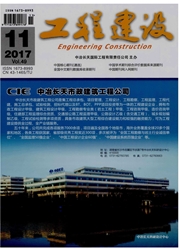

 中文摘要:
中文摘要:
对比分析了中国《建筑抗震设计规范》(GB50011-2010),美国规范FEMA273/356/440中对于目标位移的不同规定,提炼总结了FEMA273/356/440中各个参数的物理意义.对比分析了中美抗震规范罕遇地震下规则框架结构非线性位移的设计方法,研究表明:中国与美国规范都是基于经验统计计算罕遇地震位移,FEMA规范基于系数修正法、相关的系数物理概念,中国规范基于弹塑性时程分析的统计.两国规范计算结果基本一致,中国规范计算结果略大,偏于安全.
 英文摘要:
英文摘要:
In this paper, the Chinese 'Code for Seismic Design of Building' (GBS0011-2010) and American code of FEMA 273/356/440 are compared in terms of the different provisions of the target displacement, and the physical meaning of parameters in FEMA273/356/440 is summarized. The design method of the nonlinear displacement of regular framework under infrequent earthquake between Chinese and American seismic codes is compared and analyzed. The results have shown that Chinese code and American code are both based on empirical statistics to calculate the displacement under infrequent earthquake, the FEMA codes are on the basis of coefficient correction method, and physical concept of the related coefficient, the Chinese code is based on elastic-plastic time history analysis. The calculation results between the two codes are basically identical, and the Chinese results are slightly larger, which means safer.
 同期刊论文项目
同期刊论文项目
 同项目期刊论文
同项目期刊论文
 期刊信息
期刊信息
